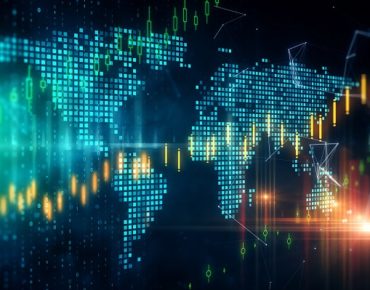Op-Ed: Poor Countries Are Struggling to Industrialize Their Way to Growth – AI Can Help

While it is still too early to tell how severely COVID-19 will damage the world’s rich economies, some worry that the devastation will be far worse in poor ones, where healthcare and infrastructure lag.
Even before the pandemic, poor countries’ traditional path to middle-class prosperity was growing rocky. Historically, people have left small farms to take factory jobs in cities, fueling export-led growth that raised incomes and living standards.
Until recently, escaping poverty through this type of industrialization meant competing mainly against the West, relying on low wages as a competitive advantage.
But global manufacturing chains have become hyper-competitive. China dominates through sheer scale; cheap labor is no longer enough.
Each global region is different. In Latin America, automation has eliminated manufacturing jobs by making existing workers more productive. In Africa, workers are abandoning factories to work as shop keepers, day laborers, or kitchen staff – often because bad roads make commuting impossible.
In Asia, garment factories have laid off workers as COVID-19 has forced the shut-down of clothing shops in North America and Europe.
Whatever the reasons behind it, some worry that if the de-industrialization trend continues, developing countries may soon have little of value they can sell to the world.
Huawei’s research suggests a more hopeful outcome. We believe Artificial Intelligence (AI) and other technologies will create trade international flows that provide some of the world’s poorest citizens with higher-paying jobs and better lives.
Increasingly, the global economy depends on cross-border flows of digital data. Digital products such as software and e-books, and digital services such as streaming video, are creating value that can exceed what is reflected in traditional growth measures such as GDP. Soon, 5G and the Internet of Things will lead to products such as autonomous cars that rely on complex digital systems whose components can be sourced from a variety of countries. This new class of class of product will create cross-border value chains built on machine learning, data analytics, and connectivity.
An example of what could fast become a typical intelligent connectivity ecosystem
Suppose a German automaker wants to make self-driving cars (see graphic). It might design them at its headquarters, then work with data scientists in Israel to develop algorithmic models and analytics for the new vehicles.
The German company might then team up with a computer-vision company in India, whose people perform the data-tagging that trains automotive software to recognize objects such as pedestrians and street signs. Finally, a car-rental company in Australia could buy the vehicles for its fleet. The Australian car fleet collects data on emissions and other performance criteria, which are sent for analysis to the team in India, helping the German car-maker produce better vehicles in the future.
One might assume the big winner in that scenario would be Germany and Australia. But the greatest opportunities for relative economic advancement may take place in the developing world.
Before data can be used to create software, someone first has to “clean” it, ensuring that datasets are accurate and complete. Data must also be labelled before computers can learn from it. Older AI systems, for example, could not distinguish a bicycle from a cat, but given one million images labelled “bicycle,” the AI will eventually learn to recognize one.
Data cleaning, labeling, and similar tasks lay the groundwork for the kinds of sophisticated AI applications that will be used to guide driverless cars. Countries with abundant and (relatively) low-cost labour will possess a competitive advantage in performing this type of work.
Another example: China has produced more than a dozen “AI unicorns,” companies worth more than US$1 billion each. The Economist notes that much of China’s AI success is built on inexpensive, well-organized workers who clean and label the country’s immense datasets. For example, a company called MBH runs some of China’s largest “data factories,” employing about 300,000 data labellers in some of the country’s poorer provinces. Each labeller works a six-hour shift, tagging faces, medical images, and photos of cities. Without this data-labelling infrastructure, China’s AI unicorns would get nowhere.
Immense opportunities exist for developing countries to compete in data-labelling and other parts of the digital economy, such as localizing apps for different languages and cultures. These opportunities will grow as AI is adopted around the world.
Because digital ecosystems rely heavily on cross-industry collaboration, countries with protectionist policies will fall behind. And if the dual trends of protectionism and de-industrialization continue, a vital development ladder could be snatched away from the world’s poor.
Even if opportunities in traditional industry and manufacturing are growing scarce, alternative value chains are being created. Governments that take act quickly can use them as an alternative path to higher productivity, prosperity, and growth.
Andrew Williamson is Vice President and Economics Adviser at Huawei Technologies.












